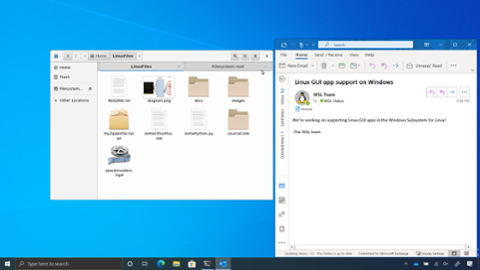The rise of open cloud platforms is fostering a rise in demand for Linux specialists equipped with the right expertise. In this new environment, obtaining a Linux certification can boost your career by proving your skills in increasingly critical areas.
With the vast majority of Amazon servers running Linux, and many servers running open-source software, Linux is, in the eyes of many, the de facto OS of the cloud. No wonder sysadmins, systems engineers, and system administrators with Linux skills can earn a healthy salary premium.
“In some sense, people think of Linux as an ‘old’ technology, but the piece they miss is that the transition to the cloud refreshed the way people should think about it, because everything is now running on it,” explained Clyde Seepersad, senior vice president and general manager of training and certification at The Linux Foundation. “The tools for cloud management are great, but the time when your engineers to prove their mettle is when things go sideways, and when they do, you almost always have to drop to the OS to figure it out.” (Remember, use your linux job interview to always talk through how you’ve tackled challenges and solved problems; that’s a key thing on hiring managers’ minds.)
Burning Glass, which collects and analyzes millions of job postings from across the country, has a breakdown of the top technologist jobs that request Linux-related certifications. As you can see, the percentage of jobs where one is requested is fairly small, but projected to grow in coming years.
Again, the percentages are small, but it's important to keep in mind that a certification will nonetheless assure future employers (and current ones, if you're trying to leverage a certification into a promotion or raise) that you have the necessary Linux-related skills to do the job. That could help you stand out in a crowded field of applicants, even if the job itself doesn't request any Linux certifications.
What are the top Linux certifications?
Seepersad pointed to CompTIA Linux+, which covers the foundational skills and includes performance-based and multiple-choice questions, as well as certifications offered by Red Hat. Of course, certifications from The Linux Foundation—including System Administration, Kubernetes Administrator and Linux Foundation Certified Engineer (LFCE)—are also among the most popular.
Randy Russell, Red Hat’s director of certification, explained their biggest certification in terms of the number of people getting certified is Red Hat Certified System Administrator. “That’s at the center of our infrastructure certifications universe, and represents the core skills we think everyone needs to know,” he noted. “If you’re going to go into OpenShift, or Ansible Automation, or OpenStack, these are skills you have at the center of all of that.”
Russell also noted that Red Hat Certified Engineer is a popular certification, aimed at those who want to supplement their core skills with the ability to automate those tasks using a combination of automation frameworks and shell scripting.
Other certifications ranging from troubleshooting, high availability, Linux performance tuning, and securing the OS have also been popular. In addition, there’s been a spike in interest in obtaining Red Hat Certified Specialist in OpenShift Administration.
How long does it take to get a Linux certification?
“For an entry-level type certification, and someone who is brand new to IT, I would say if you treat it as a six-month full-time course of study and practice,” Seepersad said. “That should be what you’re committing yourself to—this is not a ‘take five or six weeks and knock it out’ kind of skill.”
He recommended working on exercises every day, setting up your own servers, and really doing the work in them: “It is a meaningful, broad set of skills.”
For Russell, the length of time to acquire a certification depends on where you’re starting from. One of the benefits of virtual learning is the ability to go at a comfortable pace for each individual.
“If you’ve learned through the school of experience, it could take as little as the 2.5 hours it takes to take the exam,” he said. “However, even if you’re someone who has a lot of work experience, your employer has a particular way of doing thing, and there may be broad based skill you’re lacking, and you’ll want to supplement that with a training program.”
What is the level of difficulty in obtaining Linux certifications?
“In general, the lower down the stack you go, the more challenging it becomes, because the breadth of what you need to go gets wider,” Seepersad noted. “Networking, storage, computing—when you’re down on the operating system, the breadth is bigger than in the middleware or software certification.”
He noted that OS certifications will tend to be the most challenging (the flip side being that they’re also the most useful).
What are the benefits of a Linux certification?
Like Seepersad, Russell pointed out Linux has become a very dominant OS in the enterprise and the cloud.
“Regardless of what cloud provider you’re talking about, if you look at the OS running those workloads, its Linux,” he said. “It’s a useful skill in and of itself because there’s such widespread adoption as the preferred OS of the enterprise. I’d also emphasize that it’s your gateway to other things in the world of IT.
Russell pointed to containers and Kubernetes as an emerging paradigm of how businesses are handling enterprise applications. “Both are a logical next step for somebody who knows Linux. It’s not just the benefits that Linux brings, it’s a logical step into software-defined storage—or into the world of OpenStack, which has Linux as its foundations, and is becoming widely adopted for edge computing,” he said.



